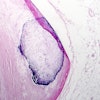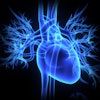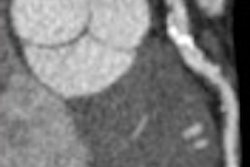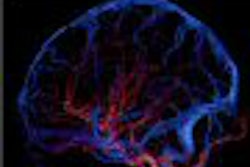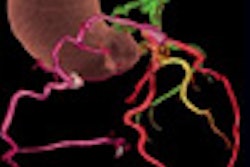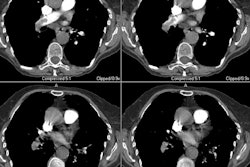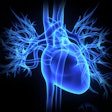Dear AuntMinnie Member,
Coronary CT angiography has come under fire in recent weeks from U.S. regulators concerned about the costs that could be incurred if the technology achieves more widespread use. But economic considerations aside, the clinical case for coronary CTA has never been stronger.
That's according to a new article we're featuring this week in our Cardiac Imaging Digital Community by staff writer Eric Barnes. The story covers a recent presentation by Dr. David Dowe, radiologist and CTA advocate, who believes that the technology's promise is so great that it is already making other cardiac imaging modalities obsolete.
Dr. Dowe believes coronary CTA should be the first-line test for coronary artery disease. It's safer than catheter-based angiography and more accurate than stress echocardiography or nuclear perfusion. Even the biggest knock against it -- radiation dose -- is starting to be resolved with new prospective gating techniques that reduce dose to as low as 2 mSv.
Dr. Dowe also addresses the political imbroglio that erupted earlier this month, when news got out about a proposal from the Centers for Medicare and Medicaid Services (CMS) to limit cardiac CTA reimbursement to two indications. Find out who Dr. Dowe believes is behind the initiative -- and learn more about why coronary CTA is the test of the future -- by clicking here.
CTA has been grabbing the limelight in cardiac imaging of late, but that doesn't mean there isn't intriguing research going on in other modalities. In another article in the community, we relate the story of how U.S. researchers used cardiac MRI to detect the presence of iron in the heart, and thus guide iron overload therapy. Read more by clicking here.
In a third story, researchers from Hong Kong used MRI and SPECT to guide injections of autologous bone marrow cells into patients with severe coronary artery disease, thus improving left ventricular ejection fraction and exercise tolerance. Details on that story are available by clicking here, or visit the Cardiac Imaging Digital Community at cardiac.auntminnie.com.


